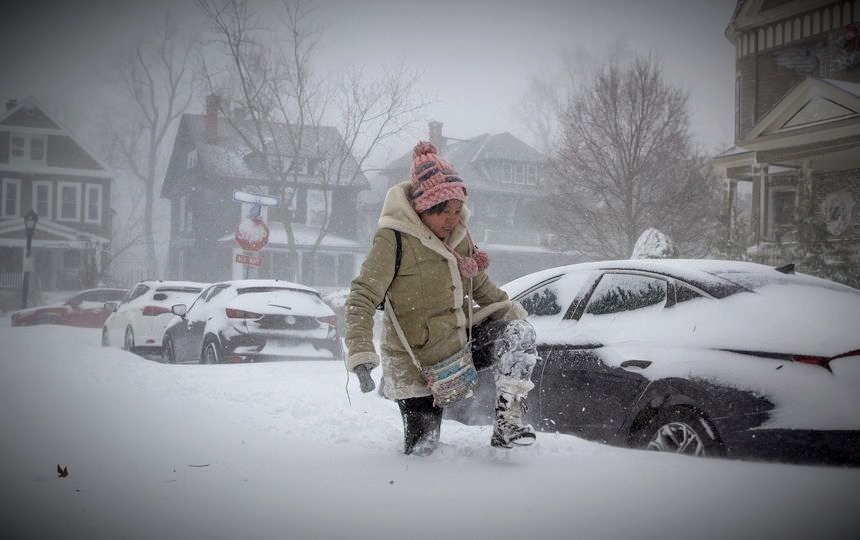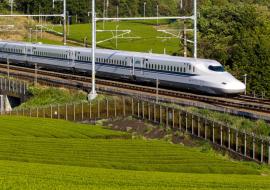Massive Winter Storm Plays Havoc with Travel in the U.S.

(AP) - A brutal winter storm knocked out power in California, closed interstate highways from Arizona to Wyoming and prompted more than 1,500 flight cancellations — and the worst won’t be over for several days.
Few places were untouched by the wild weather, some at the opposite extreme: long-standing record highs were broken in cities in the Midwest, mid-Atlantic and Southeast.
The wintry mix was hitting hard in the northern tier of the nation, closing schools, offices, even shutting down the Minnesota Legislature. Travel was difficult. Weather contributed to more than 1,500 U.S. flight cancellations, according to the tracking service FlightAware. More than 400 of those were due to arrive or depart from the Minneapolis-St. Paul International Airport. Another 4,400-plus were delayed across the country.
The roads were just as bad. “A major winter storm and multi-day closures are likely on Interstates and secondary roads throughout Wyoming!” the state Transportation Department said on Facebook. It wasn’t much better in neighboring states.
“Sometimes it’s physically impossible to keep up with Mother Nature,” said North Dakota Highway Patrol Sgt. Wade Kadrmas. He warned those who venture out to dress appropriately. Often, when motorists get stranded, “They don’t have a winter jacket. They might be wearing shorts and flip-flops, just thinking they’re going to get from point A to point B and nothing is going to go wrong,” he said.
In the Pacific Northwest, high winds and heavy snow in the Cascade Mountains prevented search teams from reaching the bodies of three climbers killed in an avalanche on Washington’s Colchuck Peak over the weekend. Two experts from the Northwest Avalanche Center were hiking to the scene Wednesday to determine if conditions might permit a recovery attempt later this week.
Powerful winds were the biggest problem in California, toppling trees and power lines. By Wednesday afternoon, more than 88,000 customers in the state were without electricity, according to PowerOutage.us.
A more than 200-mile (320-kilometer) stretch of Interstate 40 from central Arizona to the New Mexico line closed due to snow, ran and wind gusts of up to 80 mph (129 kph). Thousands were without power in Arizona.
In the northern U.S. — a region accustomed to heavy snow — the snowfall could be historic. More than 20 inches (50.8 centimeters) may pile up in parts of Minnesota and Wisconsin, the National Weather Service said. According to the weather service, the biggest snow event on record in the Twin Cities was 28.4 inches (72 centimeters) from Oct. 31 through Nov. 3, 1991. The second-largest was 21.1 inches (53.6 centimeters) of snow from Nov. 29 through Dec. 1, 1985.
Temperatures could plunge as low as minus 20 degrees Fahrenheit (minus 29 degrees Celsius) Thursday and to minus 25 F (minus 32 C) Friday in Grand Forks, North Dakota. Wind chills may fall to minus 50 F (minus 46 C), said Nathan Rick, a meteorologist in Grand Forks.
Wind gusts may reach 50 mph (80 kph) in western and central Minnesota, resulting in “significant blowing and drifting snow with whiteout conditions in open areas,” the weather service said.
The storm will make its way toward the East Coast later this week. Places that don’t get snow may get dangerous amounts of ice. Forecasters expect up to a half-inch (1.3 centimeters) of ice in parts of southern Michigan, northern Illinois and some eastern states.














